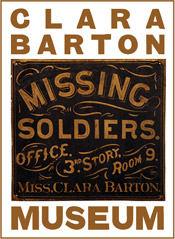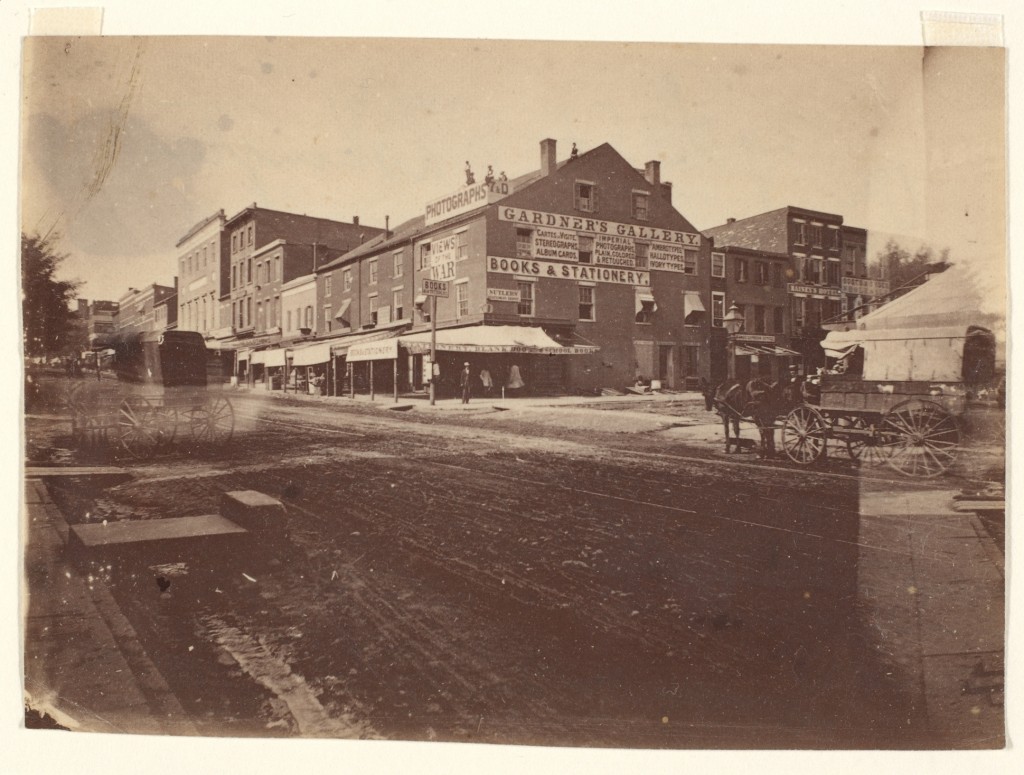Clara’s Capital: Alexander Gardner’s Gallery, 7th and D
Amelia Grabowski, Education and Digital Outreach Specialist
If you’ve taken a tour of the Clara Barton Missing Soldiers Office with me, you’ve probably seen this photograph.
It’s the intersection of 7th Street and D street, literally one block down from the boarding house where Clara Barton lived and worked during the Civil War. You can see the still unpaved (un-cobbled) streets, the street car tracks, and the awnings stretching out in front of the stores. In the background to the far left is our building.
Of course, the photographer wasn’t interested in our building. He had already captured exactly what he wanted: Alexander Gardner’s Studio and Gallery.
The signs on the sides of the building in question leave little doubt what’s inside: Gardner’s Gallery, Photographs, Views of the War. (For anyone who has complained about the Renwick Gallery sign, this is proof that somewhat hokey signage is a proud Washington tradition.)
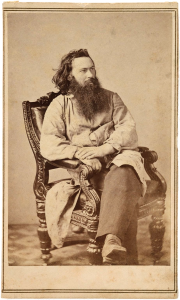
Alexander Gardner, 1863
As the signs imply, Alexander Gardner took photographs of the Civil War. Think of any photograph from the war and chances are Alexander Gardner probably took it, including Lincoln’s infamous cracked plate portrait.
Another famous Civil War photographer, Matthew Brady, gave Alexander Gardner his start, hiring the recent Scottish immigrant. Brady sent Gardner to Washington, DC to manage Brady’s DC gallery. There it is possible that Gardner took Clara Barton’s photograph. Clara frequented Brady’s DC photography studio throughout the war. Unhappy with her appearance, Clara destroyed both the photographs and photo negatives from her early sittings; only her 1865 portrait remains.
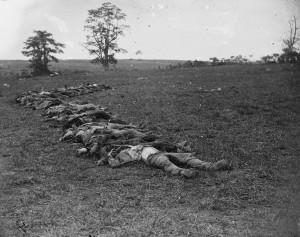
Confederate Dead at Antietam, 1862
Not only did Matthew Brady send Gardner to DC, he sent him to the front. In the 1860s, like today, the public credited Matthew Brady with capturing the war in photographs. In 1862, The New York Times wrote “Mr. Brady has done something to bring home to us the terrible reality and earnestness of war. If he has not brought bodies and laid them in our dooryards and along the streets, he has done something very like it.” However, it was actually Matthew Brady’s studio, a group of photographers, who were taking these photographs. Alexander Gardner was one of those men.
In 1863, Gardner started his own studio, the one in the photograph. As the war continued, Gardner ran his studio, took portraits (especially of Lincoln), and continued photographing the War.
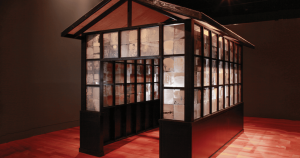
An artistic reinterpretation of a greenhouse built of glass photo negatives
Photography was still in its infancy during the Civil War. Brady and Gardner were pioneers of photojournalism. Civil War photographs were often reproduced as sketches or lithographs, then included in books, periodicals … even sold as postcards. After the war, though, the market for Civil War photography dwindled. One could imagine that the public wanted to move on, to forget. In Ken Burns’ The Civil War (1990), Burns claims the glass plates that had been used to capture photographs were re-purposed—used to build greenhouses where the sun wore away the photograph negatives, leaving only the glass and a ghost of the image. Photographic historians and artists have been unable to confirm this—although one artist has paid homage to Gardner and Brady and the Civil War dead by recreating it.
Whether or not the greenhouse story is true, it is a fitting ending to this blog post. Over a century later, aren’t most of the buildings that witnessed the war like those greenhouses—re-purposed with the ghosts of what they witnessed hidden in plain sight, waiting for someone to discover them. That was certainly the case for the Clara Barton Missing Soldiers Office. As for Alexander Gardner’s Studio and Gallery at 7th and D, it’s more like the photographs that disappeared. It was torn down, something else built in its place.
Further Reading:
- Object Description from the Metropolitan Museum of Art
- Smithsonian Magazine Article
- Washington Post Article
- Dark Fields, An Exhibit at the National Portrait Gallery
Tags: 7th Street, Alexander Gardner, Clara's Capital, Dark Fields, DC History, Photography Posted in: Uncategorized
